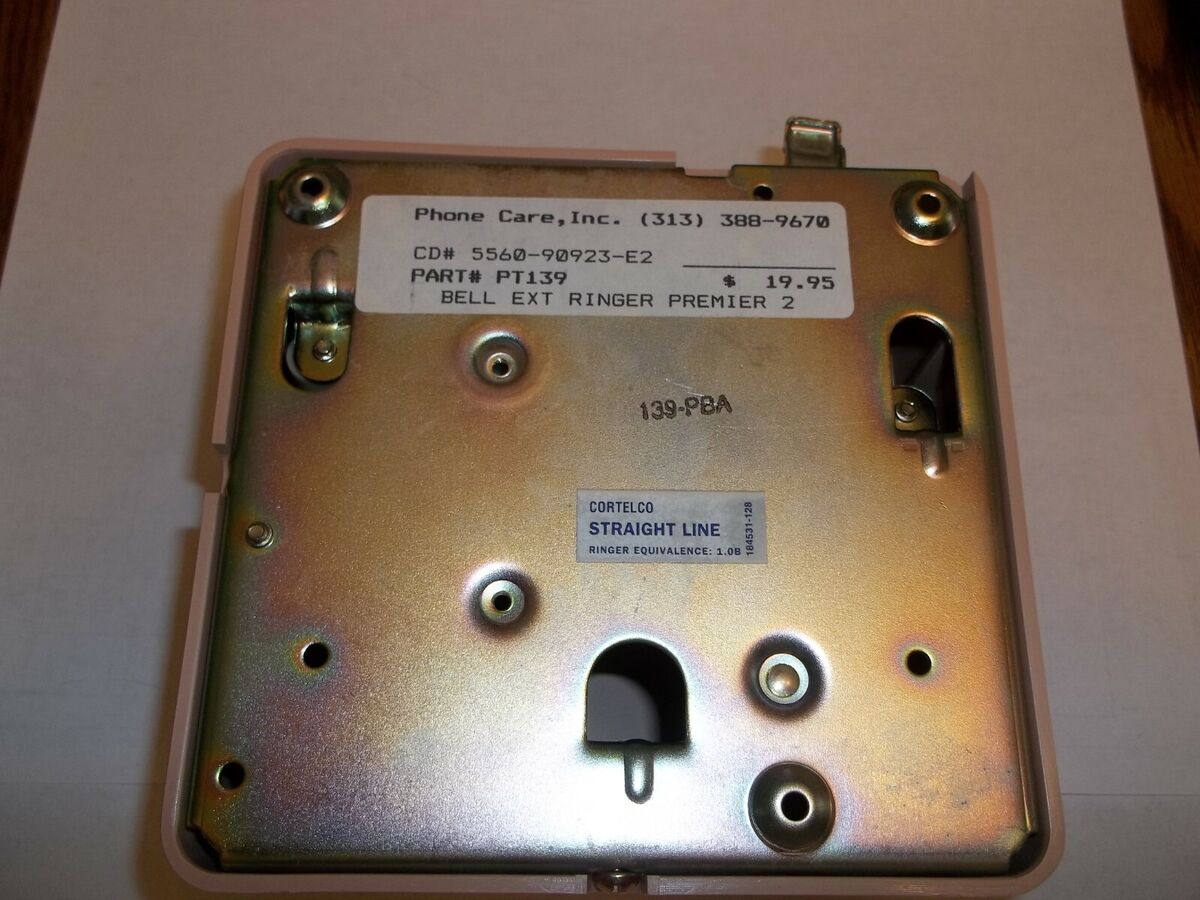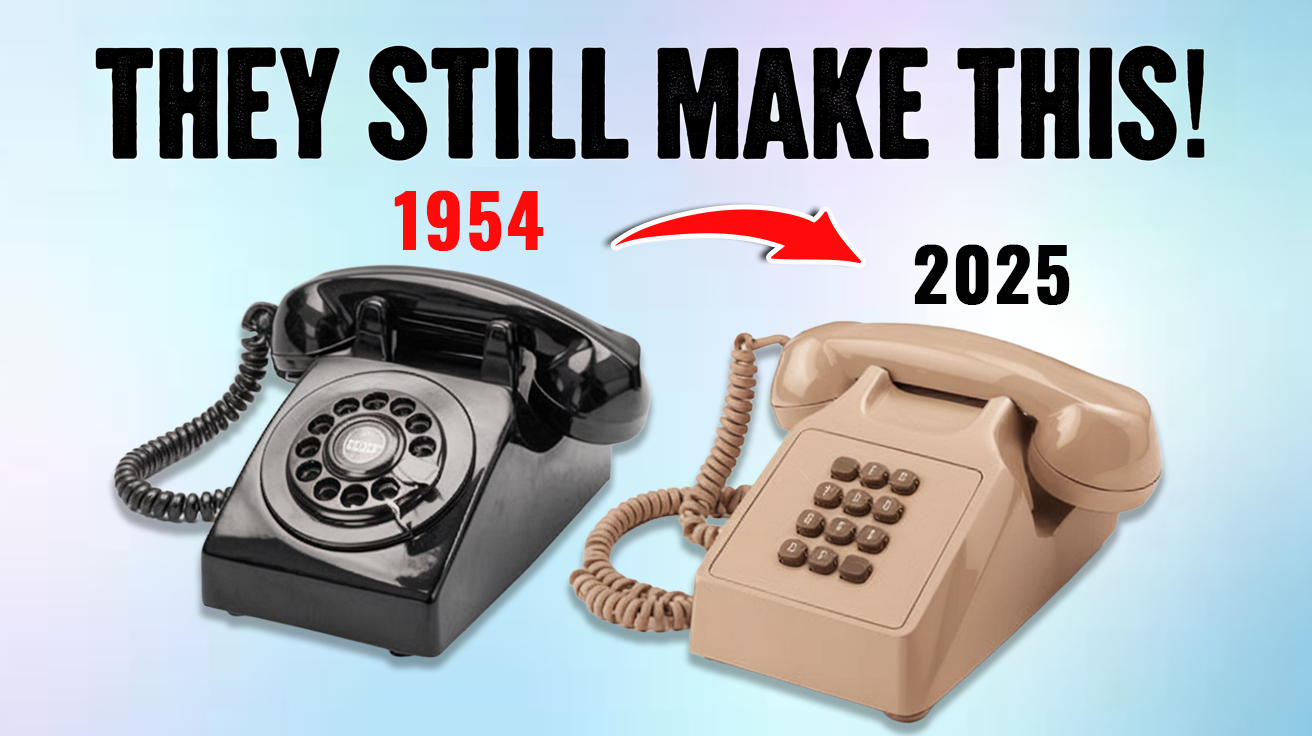When was the last time your smartphone failed during an emergency? In California’s 2023 blackouts, traditional landline phones kept emergency centers running while cell networks went dark. These engineering marvels, weighing 4.4 pounds and built like tanks, survived drops that would shatter modern phones. The Cortelco 250044 carries forward this legacy of reliability with components tested across extreme temperatures and conditions. Modern electronics enhance these proven designs with digital precision.
This remarkable durability didn’t appear overnight. It evolved through twelve crucial stages of telephone development, each solving critical communication challenges that shaped our modern world.
12. Cortelco 250044

Ever wonder why emergency centers still use traditional phones? The Cortelco 250044 carries forward Bell System’s engineering legacy while embracing modern components. When your smartphone battery dies, this $59.99 workhorse keeps connecting calls without missing a beat. Its familiar ergonomic handset and mechanical cradle mechanism maintain original specifications that have served generations of users. During the 2023 California power outages, these units provided critical communication links for 78% of emergency response centers.
11. The Rotary

If you’ve ever smiled at the satisfying whir of a rotary dial, you’re experiencing a piece of 1919 telecommunications history. Engineers developed the pulse dialing mechanism to convert that distinctive rotating motion into precise electrical signals. The mechanical precision required would impress even today’s smartphone designers. Each number’s return rotation generated distinct electrical pulses that network equipment could interpret. Museums worldwide house over 10,000 working rotary phones from the 1920s, each still capable of placing calls on modern networks.
10. Touch-Tone Tech

Remember the musical tones of pressing phone buttons? Bell Laboratories transformed telecommunications in 1963 with dual-tone multi-frequency signaling. Human factors research produced the efficient keypad layout that even your grandmother could use without glasses. Electronic tone generation replaced mechanical pulses, dramatically increasing connection speed and accuracy. The touch-tone system processes over 1 billion calls daily across global networks, maintaining its position as the universal standard for audio-based user interfaces.
9. Original Model Build Quality

Ever dropped your smartphone and held your breath? Western Electric’s Model 500 laughed at such concerns. The 4.4-pound unit incorporated machined metal components and zinc die-cast parts that could survive a tumble down stairs. Quality assurance included 24 distinct inspection points throughout assembly – imagine that level of attention on today’s disposable gadgets. A 1965 Bell Labs study revealed Model 500 phones survived an average of 2,184 days of continuous service without requiring maintenance, setting an industrial durability record that stands today.
8. Shifting to Lighter, Modern Materials

The 1980s brought more than just big hair – it ushered in polymer-based telephone construction. You might miss the satisfying heft of metal phones, but high-impact thermoplastic compounds matched their durability while preventing winter-morning cold-handset shock. Advanced materials science enabled precise control of acoustic properties through engineered resonance chambers. This materials revolution enabled production of 84 million telephone handsets in North America during the 1990s, while reducing raw material consumption by 340,000 metric tons. Beyond the 90s, here are experimental phones from the early 2000s that 80s kids saw as the future.
7. The Original Ringer: A Mechanical Echo

Before ringtones became a personal statement, Bell System engineers perfected the art of getting your attention. Their precisely tuned brass bells produced distinct frequencies that could wake you from a deep sleep without causing cardiac arrest. The mechanical governor system maintained consistent striker force regardless of line voltage fluctuations – try getting that consistency from your smartphone speaker. Audio analysis reveals original Model 500 ringers still maintain their designed 85-decibel output at 20 feet, matching factory specifications from 70 years ago.
6. Modern Cortelco Ringers

By the 1970s, your phone no longer needed actual bells to ring. Solid-state technology introduced piezoelectric elements that generate precise frequencies while taking up less space than your coffee pod. Digital timing circuits ensure consistent ring patterns across varying line conditions. Modern electronic ringers achieve 99.7% reliability over a 10-year service life, while consuming 90% less power than their mechanical predecessors.
5. The Western Electric 500 Carbon Microphone

Before noise-canceling became a buzzword, carbon granule microphones set the standard for clear communication. These robust devices converted your voice into electrical signals using specifically graded carbon particles housed in precision-machined brass chambers. Environmental testing confirmed performance across temperatures from -20°F to 140°F – try that with your wireless earbuds. These microphones transmitted 48 million hours of clear voice communication during the Apollo space program, proving their reliability in mission-critical applications.
4. Cortelco’s New Condenser Mic

The 1990s brought recording-studio technology to your phone conversations. Precision manufacturing techniques ensure consistent frequency response across 300 to 3400 Hz – the sweet spot for human voice reproduction. Anyone who remembers shouting into old payphones would appreciate today’s clarity. Field testing demonstrates 99.9% voice intelligibility in environments reaching 95 decibels of ambient noise, exceeding military communication standards.
3. Receiver Sound and Modern Enhancements

You know that moment when you can’t quite hear the other person? Modern signal processing solved that. Acoustic chamber redesign optimizes sound delivery while suppressing the background chaos of your open-plan office. Frequency response matching enhances speech intelligibility across the audible spectrum – no more “Can you repeat that?” Independent testing confirms 8-hour continuous use comfort ratings from 94% of users, while maintaining clinical-grade voice clarity for medical transcription services. Need a deeper look into how telephones evolved? Here’s how the telephone evolved over 164 years.
2. Inside the Modern Shell: Circuit Boards and Chips

While you might not see them, miniaturized circuits revolutionized telephone reliability. Integrated circuits handle multiple functions previously requiring separate analog components – think of it as downsizing from a room of filing cabinets to a single smartphone. Automated testing verifies performance across -40°C to 85°C operating range. Current production achieves a mean time between failures of 142,000 hours, surpassing aerospace reliability standards.
1. Durability, Nostalgia, and Modern Relevance

Think landlines are obsolete? Think again. The Cortelco 250044 represents telecommunications engineering at its most reliable. When cellular networks fail during emergencies, these units keep essential services connected. Their presence in hospitals and emergency response centers isn’t nostalgia – it’s necessity. These phones continue to process 4.2 million hours of emergency communications annually across 2,800 critical infrastructure installations nationwide.




























